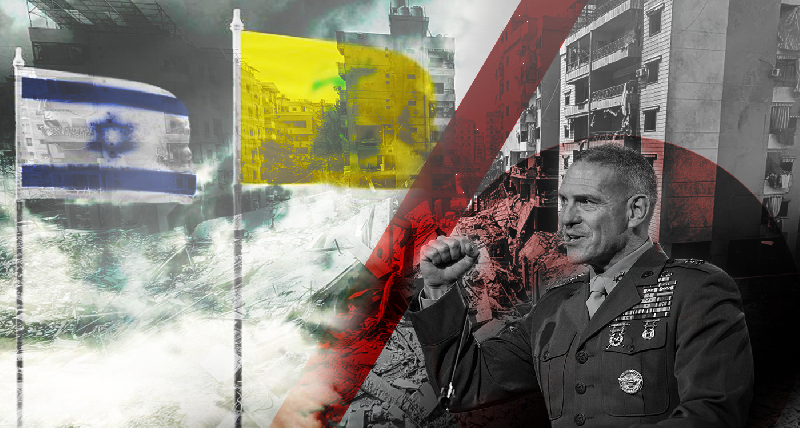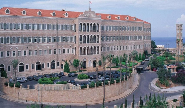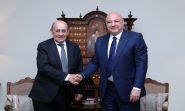
Same story, same players. After every lull along the southern border, the same words return, the same statements roll out, the same diplomats spring into action, each convinced that this time, “it’s different.” We hear about a “gradual de-escalation plan,” a “monitoring mechanism,” a “return to the core resolutions.” Earnest promises are made of “a lasting solution.” Then silence settles in again until the next targeted strike or rocket launch.
Since the ceasefire established on November 27, 2024, between Israel and Hezbollah, an odd diplomatic play has been unfolding, each actor reciting a well-worn role. The international community pretends to be shaping a meaningful framework; the Lebanese government cloaks itself in sovereignty; Hezbollah clings to its finely calibrated resistance rhetoric; and Tel Aviv repeats its timeless refrain: there will be no security in the North as long as Hezbollah remains in the South and keeps its weapons.
The “Clearfield” Mechanism
Along the Lebanon–Israel border, diplomacy has once again given way to the so-called “monitoring mechanism,” born in the wake of the ceasefire announced in November last year. This mechanism is currently headed by U.S. General Joseph Clearfield, newly appointed to lead the committee overseeing the truce agreement. A former senior officer in the Marine Corps, known for his firmness and practical command style, General Clearfield launched a whirlwind visit to Beirut on Thursday. He met with President Joseph Aoun, Parliament Speaker Nabih Berri, and Prime Minister Nawaf Salam. His mission, officially, was to breathe life back into a framework meant to uphold a ceasefire that few still respect, to formalize regular committee meetings, and to “stabilize the South” through tangible steps, in short, to impose a practice in a landscape of perpetual disorder.
The general pledged a series of measures to secure a “sustainable ending of hostilities,” while Lebanese officials, speaking in unison, demanded that his first priority be the repeated Israeli violations of the ceasefire. President Aoun, eager to reassert the army’s central role, called for a “reactivation of the mechanism” to compel Israel to halt its raids, emphasizing that Lebanon had “scrupulously respected its commitments” and that its army was “strengthening its deployment south of the Litani River day after day.” The president even offered an optimistic assessment of the situation, speaking of “cleared infiltration zones,” seized weapons, and the disappearance of “armed displays,” claims that reality on the ground has yet to substantiate.
For his part, Speaker Nabih Berri used his meeting with Clearfield to lay out an exhaustive list of Lebanese grievances: near-daily airstrikes, the destruction of agricultural and industrial infrastructure, and Israel’s continued presence on Lebanese territory, violations he deemed “flagrant” breaches of UN Resolution 1701. Prime Minister Nawaf Salam struck a more measured tone, reaffirming his government’s commitment to “restoring the authority of the State over all territory south of the Litani before the end of the year,” in line with the army’s action plan. However, he added a pointed reminder: “Israel must also meet its obligations, withdraw from the areas it still occupies, and end its violations of our airspace.”
Yet barely had the general concluded his diplomatic round when Israeli warplanes swept over the Bekaa Valley, carrying out at least twenty strikes on suspected Hezbollah positions. A stark, almost ironic contrast between the polite promises exchanged in Baabda’s salons, the distant roar of Israeli jets cutting through the Lebanese sky, and Hezbollah’s tireless efforts to rebuild, again and again.
The Same Promises, the Same Stalemate
In Beirut, officials speak of a “historic opportunity” to stabilize the front. In Tel Aviv, it’s a “strategic window.” In Washington, the famous “roadmap” is once again held up as the key to ending decades of uncertainty along the border. A revised Blue Line, demilitarized villages, and an expanded Lebanese Army presence, the outline is familiar, and so are the lines.
Yet, on the ground, nothing really changes. After losing several commanders—and more crucially, senior leaders, including its former secretary-general, Hassan Nasrallah—Hezbollah has partially pulled back from the border zone but still maintains most of its positions and is steadily rebuilding. The Lebanese Army, meanwhile, maintains little more than a symbolic presence, hampered by a lack of funding and a weak political mandate. The much-heralded redeployment south of the Litani River thus feels more like wishful thinking than a concrete strategy.
From the American side, diplomacy once again hinges on the old balancing act between Israel’s security and Lebanon’s stability. Behind closed doors, the refrain of UN Security Council Resolution 1701, calling since 2006 for the disarmament of militias and the restoration of full state authority, is repeated endlessly. Nineteen years later, Hezbollah’s arsenal has grown tenfold (though largely crippled by the recent war), while the Lebanese state has lost half its capacity.
In essence, this “lasting truce” now being promised looks just like every other before it: a temporary fix dressed up in recycled diplomatic jargon. Officials talk of “joint efforts,” “frameworks for dialogue,” and “inclusive solutions”; hollow words barely conceal the absence of political will. Meanwhile, papers are signed, hands are shaken, and peace is invoked, while drones still circle above the Litani and Hezbollah continues to feed off Lebanon’s institutional fragility. And when the next clash inevitably erupts, as many warn it will, everyone will once again act surprised that the so-called “lasting solution” lasted only a few fleeting weeks.




Comments